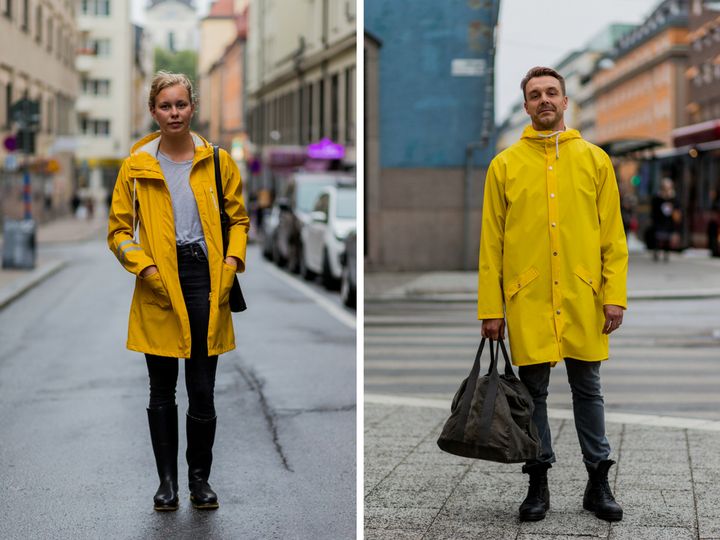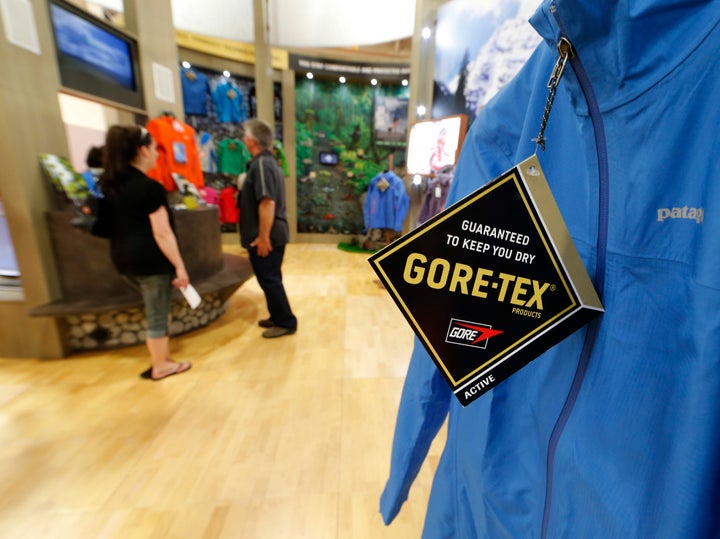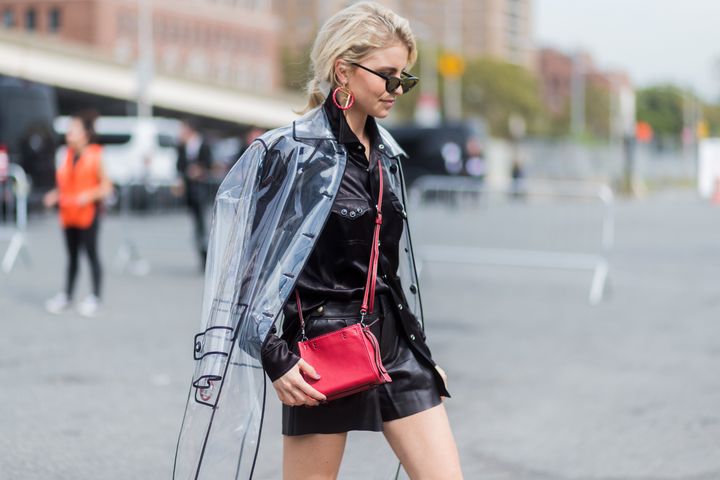
Unless you live in a place that always seems to be wet (Hey, Seattle!), waterproof garments may not seem like a hard necessity. But think about it: How many times have you gambled with a rain forecast, then wondered why you still haven’t purchased that rain jacket you’ve been thinking about?
It’s definitely time to invest, because there’s nothing quite like coming inside after getting stuck in the rain, removing your coat and realizing your clothes are totally dry. It’s like you’ve outsmarted the weather.
But when choosing waterproof outerwear, there are so many things to consider. For instance, is it actually waterproof, or is it water-resistant? What does that even mean? What will you wear it for? How long will it stay waterproof? Is it comfortable? Will it make you sweat?
We spoke to Daniel Brix Hesselager and Philip Lotko, co-founders of the Denmark-based rainwear company Rains, and Edita Hadravska, an apparel design manager for the outdoor clothing company Arc’teryx, to get the low-down on all things waterproof.

First things first: What fabrics should we look for in a jacket?
Various fabrics and assembly techniques can be used for waterproof and weatherproof clothing. Polyurethane and PVC, a type of vinyl, have been go-to materials for years ― think the classic yellow fisherman’s raincoat ― while innovations like Gore-Tex, a material often employed in technical outerwear, are extremely effective in repelling water.
“Basically, rubber rainwear contains a woven textile with a coated front side in a rubberized material, which is a classic waterproof combination,” Hesselager and Lotko explained via email. “Within the classic rubber rainwear, you often refer to two common front side materials: PVC and PU.”
Rains uses a polyurethane-coated fabric ― PU ― for its coats, which are modeled after traditional rubber raincoats. The brand Stutterheim creates similarly classic-looking jackets, though it uses a PVC coating.
Outdoor brands, including Arc’teryx, The North Face and Marmot, make waterproof jackets using Gore-Tex, which, according to the brand’s slogan, is “guaranteed to keep you dry.”
Breathability is key for comfort.
While PVC and PU rainwear are effective in repelling water, they aren’t necessarily breathable. Technologies like Gore-Tex or Polartec’s Power Shield, on the other hand, offer more breathability.
Gore-Tex is a porous membrane made of expanded polytetrafluoroethylene (or ePTFE), and “the pores are small enough that they don’t let water drops in, but they allow vapor to move out,” Hadravska explained.
For optimal comfort, the clothes you wear underneath your jacket or shell are also important, Hadravska said. Those should be breathable, too.
“You want moisture to be able to move away from your body and escape through the garment. You don’t actually want to end up with wet, sweaty garments underneath your shell because you will be cold.”

Pay special attention to the seams.
As Hadravska explained, every design and manufacturing choice plays a part in how well a garment stands up to inclement weather, including how the seams are sealed.
“There’s a lot of companies that do ... critical seam sealing as opposed to total seam sealing, like we do, so they will only tape seal the neck seam and shoulder seam or chest,” she said. “They will leave the sleeves out, for example, to save money, but that’s not really a complete solution, or completely reliable solution. It’s probably good 80 percent of the time, but not 100 percent of the time.”
There are different levels of waterproofness.
Here’s where things get a little technical.
A textile’s level of water resistance is measured in column pressure. As Hadravska explained it, “imagine a one-inch tube that’s sitting on top of the fabric, and it’s filled with water. At one point, the column is high enough that there’s so much pressure that the water will actually come through the membrane. That’s the number you’re looking for in terms of grading waterproofness.”
All three experts said products need to be tested to a column pressure of 5,000 millimeters to be considered waterproof for basic, everyday activities. More technical outerwear, including products created with Gore-Tex, can range from 15,000 mm to 20,000 mm in column pressure. In other words, they’re “definitely waterproof,” Hadravska said.
Of course, there is the slight possibility that if you find yourself in a wild storm in which it’s “raining sideways at incredible speeds, you could find there is some water coming through,” even with such highly rated fabrics, Hadravska noted.
“I’ve never seen it in my life,” she said, adding that the highest number that’s generally quoted is 40,000 mm, which is essentially equivalent to wearing plastic.
Hadravska also explained that the higher the column pressure number, “the lower, theoretically, is the breathability.”
And technically, she said, “nothing is 100 percent waterproof and breathable. It’s a balance between waterproofness and breathability. But in real terms, [a garment can be] completely waterproof, because you will never be in conditions [with] so much water and pressure for water to actually penetrate the membrane.”
When looking to buy a waterproof jacket, make sure you check the tags (or, if you’re shopping online, read the product specifications), as some brands will list the column pressure measurements, making it easier for you to determine whether the garment will suit your needs.
Not all brands list the column pressure on their products, but, for example, if you see a Gore-Tex logo, you’ll know it’s going to keep you dry, Hadravska noted.
At the very least, check to see that what you’re buying actually says it’s waterproof.

So what should we actually look for?
What you plan to do in your raincoat will determine what kind you should invest in. If you favor fashion over overall function, and you don’t mind getting a little sweaty, something with a rubberized coating is probably fine. If you want to run around, hike or ride your bike in the rain, you might prefer something a little more technical.
Overall, though, think about comfort.
“You should look for something you feel comfortable in,” Hesselager and Lotko said. “We believe in creating something simple, minimalistic which is comfortable to wear. Rainwear should be easy to carry and dry fast as an important function, because you never know when the rain suddenly hits or when the sun is out again ― the weather is just that unpredictable.”
Hadravska echoed this: “You want exactly the same level of comfort” in a technical, functional garment that you do in your everyday city clothes, she said.
“The ideal scenario is that you have a completely windproof, waterproof garment that’s highly breathable,” she said.
